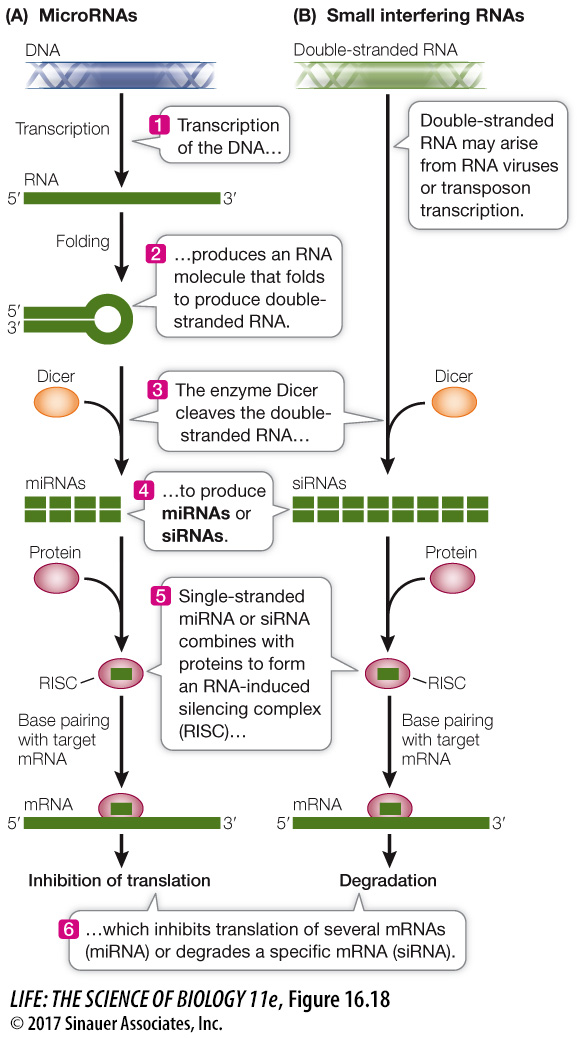Small RNAs are important regulators of gene expression
As you’ll see in Chapter 17, less than 5 percent of the genome in most plants and animals codes for proteins. Some of the genome encodes ribosomal RNA and transfer RNAs, but until recently biologists thought that the rest of the genome was not transcribed; some even called it “junk.” Recent investigations, however, have shown that some of these noncoding regions are transcribed. The RNAs produced from these regions are often very small and therefore difficult to detect. In both prokaryotes and eukaryotes, these tiny RNA molecules are called microRNA (miRNA).
354
There are as many as 5,000 miRNAs, with about 1,000 of them encoded in the human genome. Each miRNA is about 22 bases long and usually has dozens of mRNA targets because the base pairing between the miRNA and the target mRNA doesn’t have to be perfect. MicroRNAs are transcribed as longer precursors that fold into double-

In addition to miRNAs, there is a similarly acting class of molecules called small interfering RNAs (siRNAs). These often arise from viral infections, when two complementary strands of a viral genome are transcribed. Large double-
miRNAs are synthesized from DNA sequences separate from their target, whereas
siRNAs are targeted to their sequence of origin.